A Behind-the-Scenes Glimpse into the 3D Modelling Process at Zubr
Recreating the Revolutionary War battles of South Carolina in augmented reality posed a unique set of challenges for Zubr’s 3D artists and developers, given the scope of each battle scene. From 3D modelling historically accurate characters to designing realistic environments, modelling the changes that took place over time, every detail required a careful balance of research, 3D artistry and digital innovation. Leveraging new and familiar tools, the team pushed technical boundaries to craft immersive, high-quality assets for the Liberty Trail AR scenes, resulting in a level of Revolutionary War 3D modelling that will wow app users.
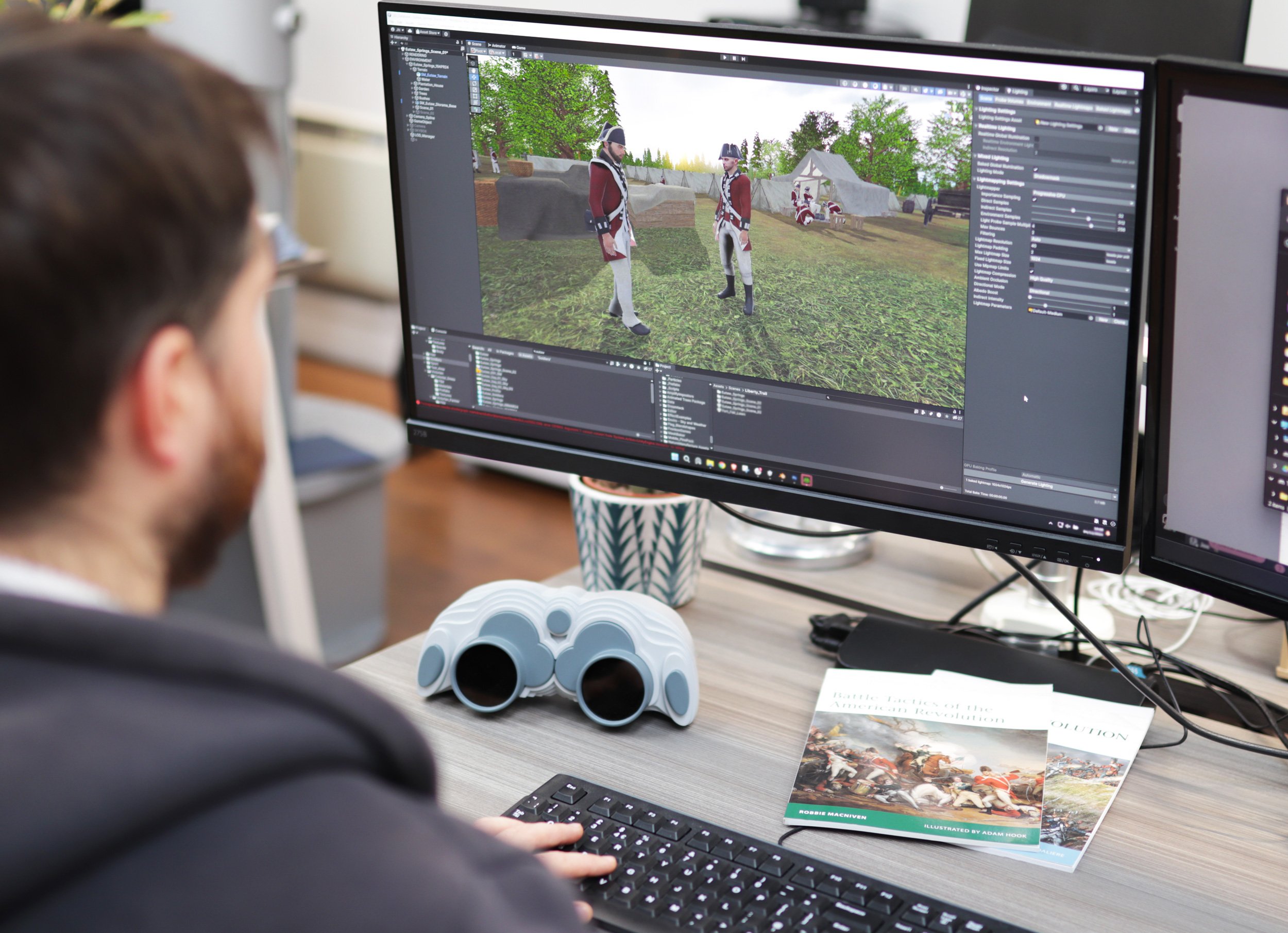
Innovative 3D Character Development
To ensure historical accuracy and facilitate the design of each battle site, Zubr collaborated with experts from the American Battlefield Trust and South Carolina Battleground Preservation trust to undertake research into each battle site. Once this in-depth research was well and truly underway, it was time for Zubr’s 3D developers to get started. 3D artists, Joe and Selwyn both faced some unique challenges as Zubr embarked on a new 3D character creation process.
Speaking to Selwyn, he expressed his excitement surrounding the commencement of the project, but also a bit of uncertainty about the scope of work ahead.
“This was a large-scale project, involving detailed character development, relying on historical accuracy and an extensive AR environment. The project required a lot of collaboration, especially with the historians. Over time, my apprehension faded as I was able to explore and hone my skills in our new character creation process.”
Zubr adopted a new software called Character Creator which tackles a lot of the technical aspects for our developers, meaning they can focus on the nitty-gritty details instead of technical, time-consuming processes such as skinning and rigging. Selwyn explains, “the rigging is the bones of a character. You have the mesh of a person and the bone system set up inside. The skinning part is how the bones move different parts of the mesh. So Character Creator saves a lot of time by doing this for you.”
This efficiency came in extra handy given the volume of characters produced for each scene. It was vital that the masses of soldiers were distinctive enough to look like different people for an uninterrupted immersive experience. This required multiple different textures for the soldier’s heads. Supported by extensive research, the 3D character creation process also involved the development of 7 different uniforms, to mark the various infantry units. This was particularly challenging for a Revolutionary War project given the variation in uniforms throughout the war; Continental Army uniforms varied due to a lack of standardisation, following material shortages and difficulties transporting goods.
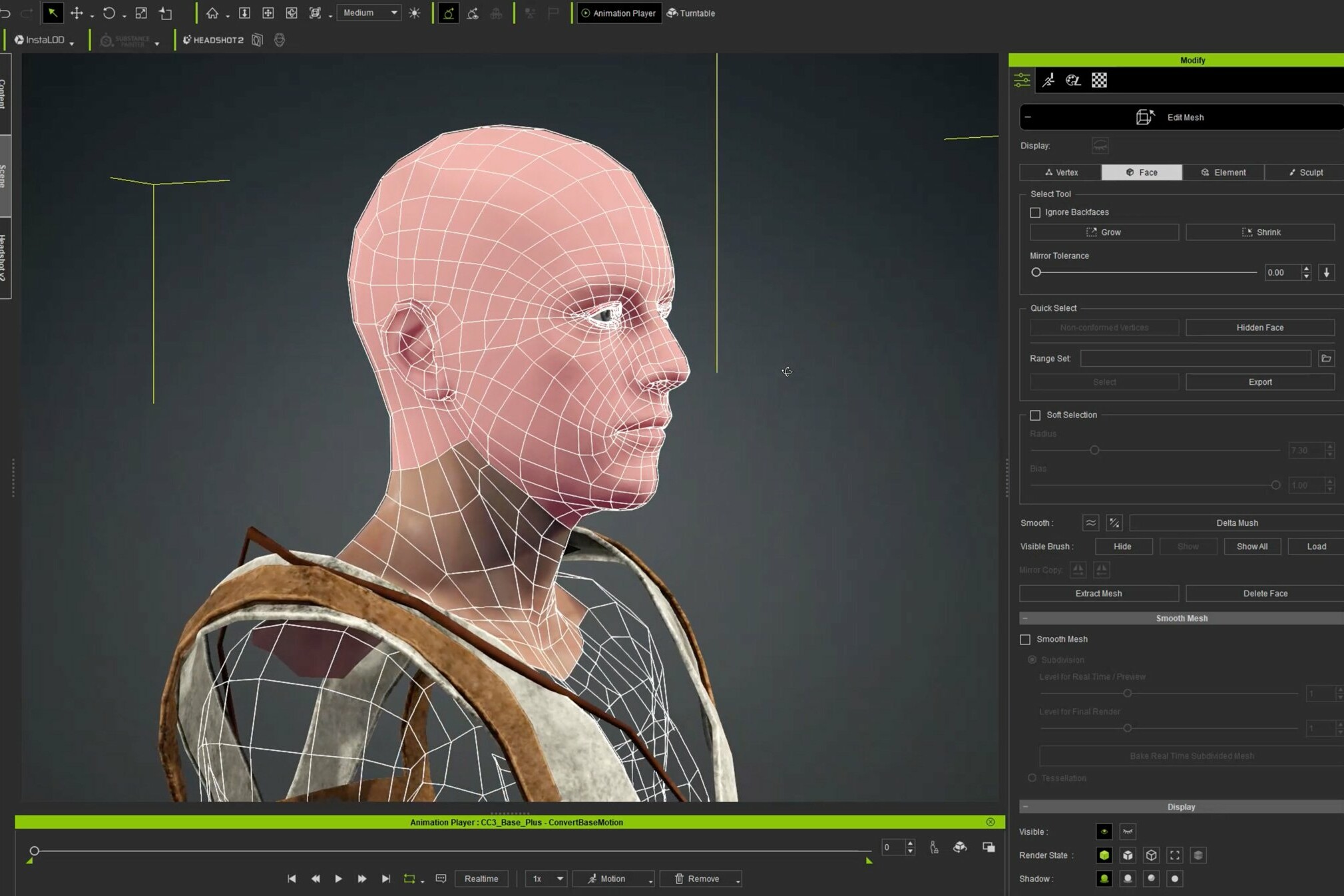
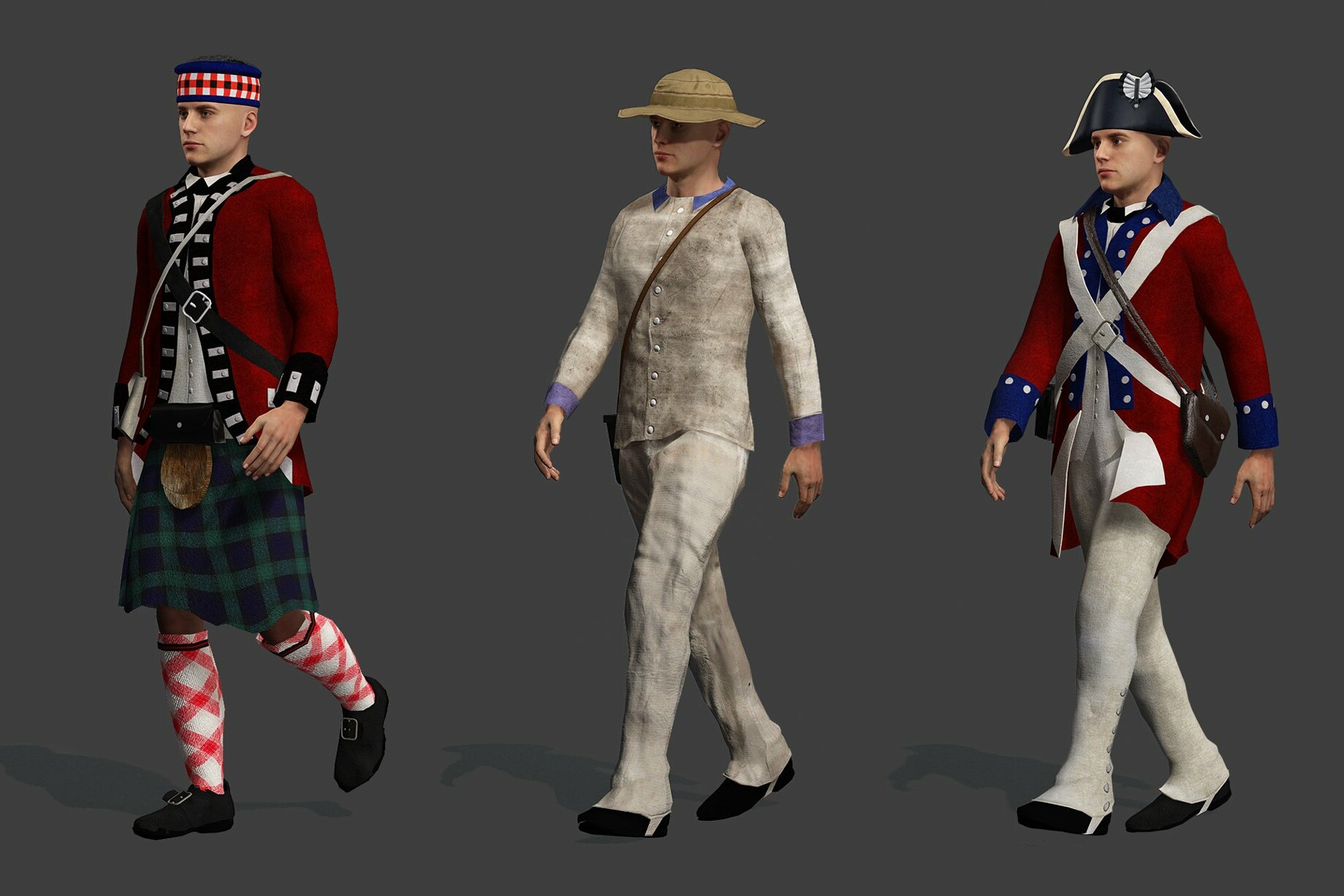
The Brick House Challenge
Meanwhile, Joe encountered some difficulties when developing the terrain for each scene.
“The main thing that was quite unique for this project, compared to our other historical recreations, is that there is nothing on site anymore, so a lot of our design is based on the research we’ve found.”
However, it wasn’t as simple as that; different sources often conflict with each other. Joe recalls, “we had to liaise with the experts to see what they think, finding the right balance between research and artistic impressions.”
Much of the Liberty Trail terrain design took inspiration from the previous Fort Watson scenes, including the use of LiDAR data. Yet, in order to improve the calibration of the onsite version, it was essential to check all scales matched the same, such as the scale of satellite imagery compared with old terrain maps.
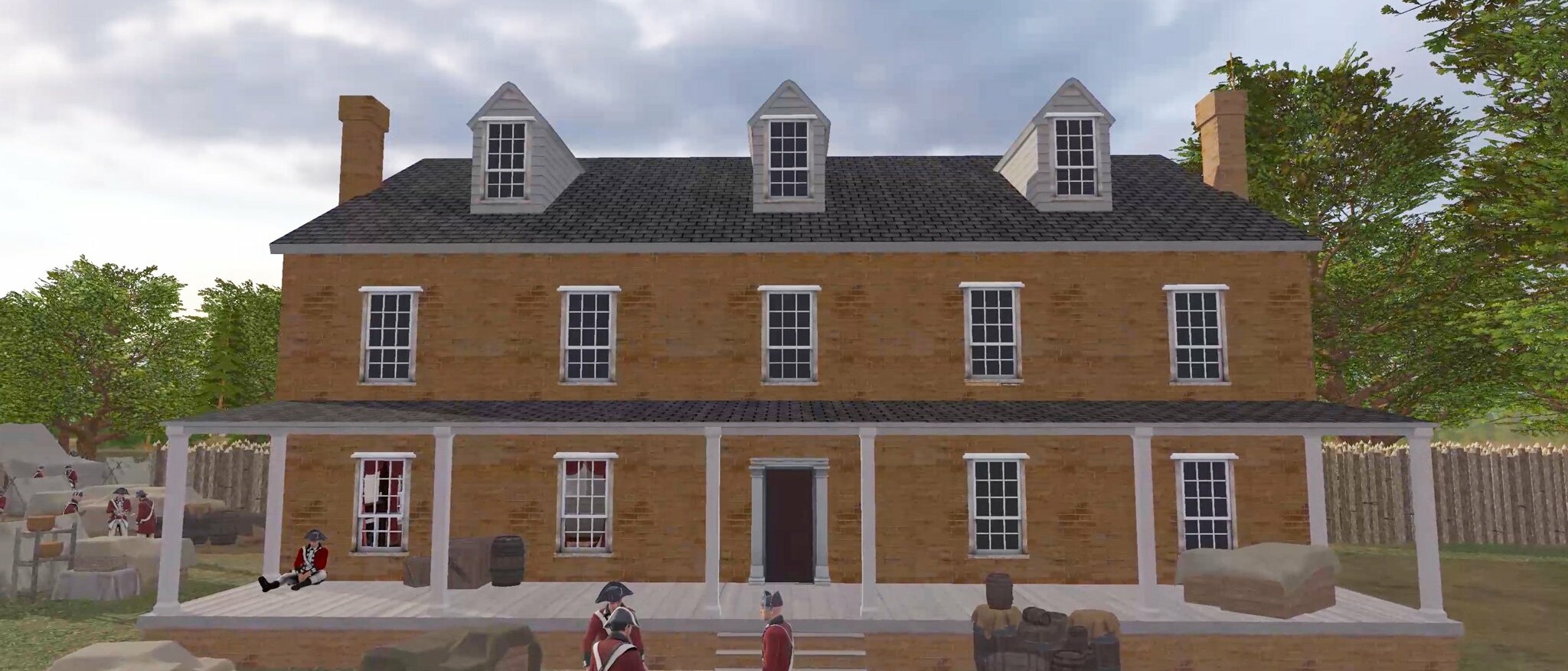
“We overlaid various maps to make sure we got the Horn Work in Marion Square in the right location,” Joe explains. “We would line up with where one of the walls was proven to stand and match up with the present day park, dropping pins on a google earth map. Then we apply the google earth map as a material to our 3D mesh to make sure we have everything lined up. It’s interesting to see how the past lines up with the present.”
The presence of the brick house in the Eutaw Springs scene posed its own unique challenge. Given the limited research on the house, Zubr’s team looked into archaeological surveys to find the exact location and size of the house.
Educated guess work informed much of the house’s creation. Remnants of glass bottles uncovered at the Eutaw Springs site suggested what sort of 3D assets were needed for set dressing the interior of the house. Meanwhile, the limited resources surrounding the exact brick house drove Zubr’s research towards other plantation houses from South Carolina, built during the same period. One useful reference was Drayton Hall, an 18th-century plantation house located 15 miles northwest of Charleston, which inspired the recreation of the parlour room.
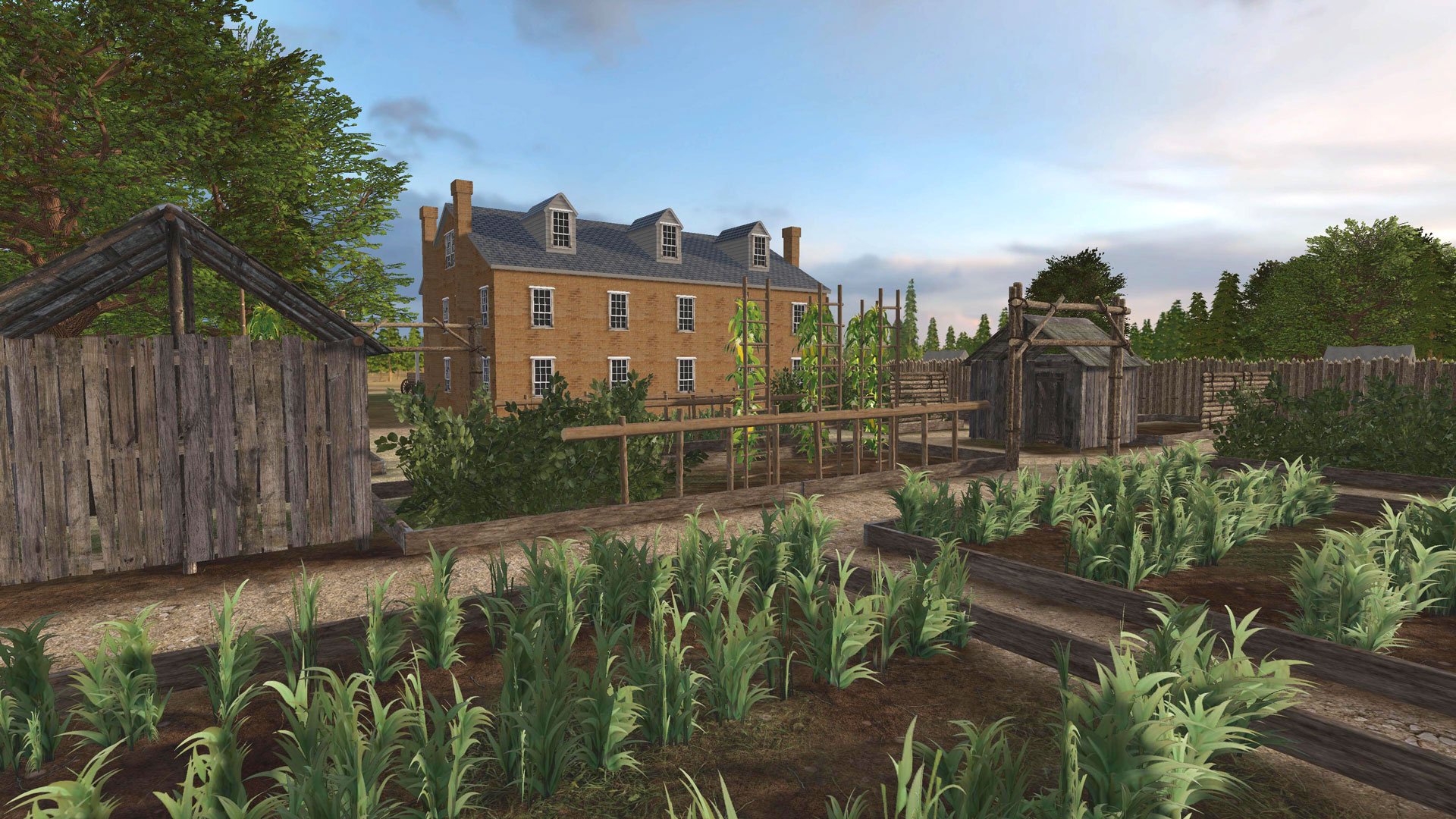
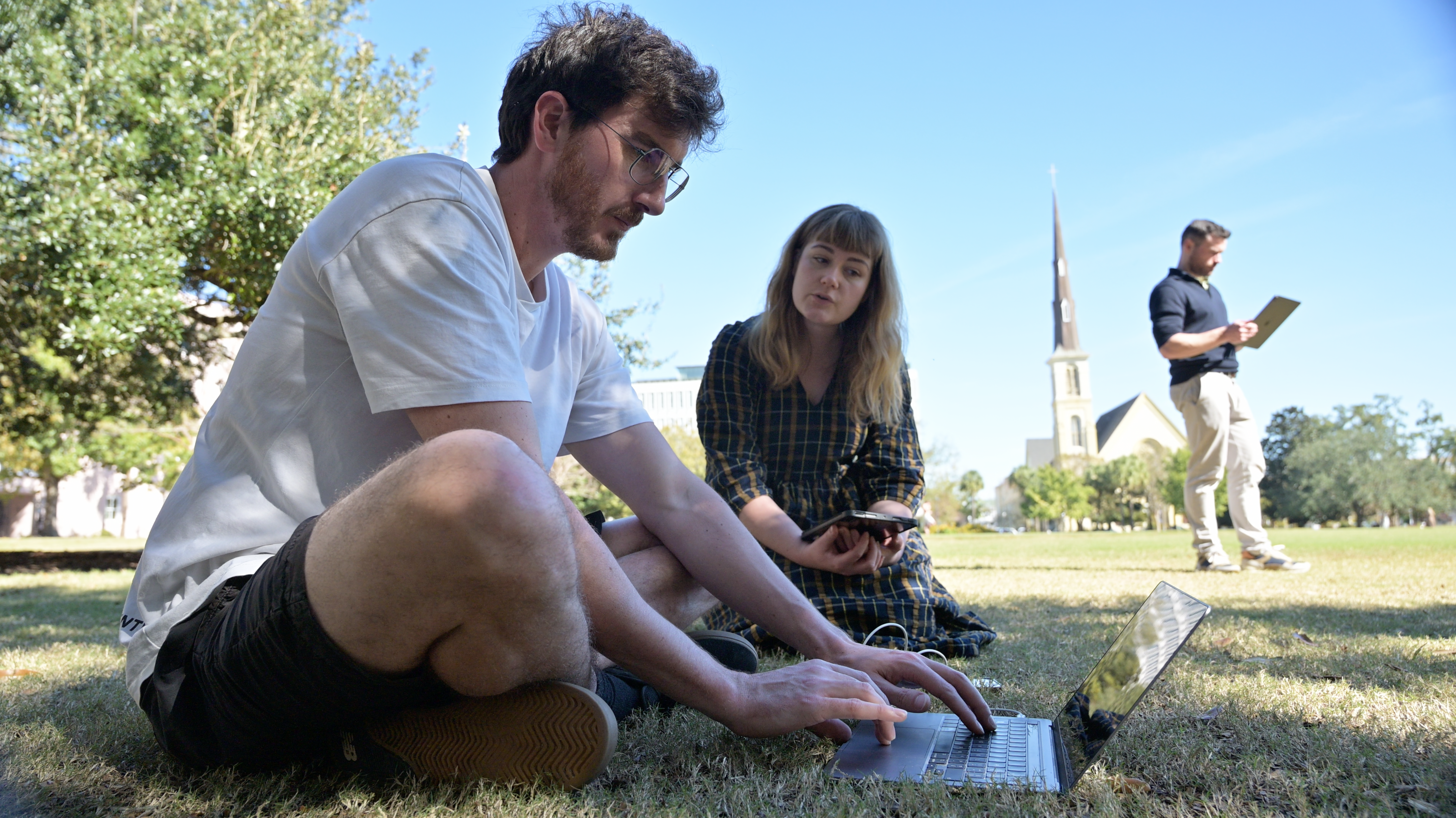
Perfecting the Tabby Texture
Selwyn utilised scanned data of real oyster shells, applying them in the Substance Designer software to effectively scatter them around a concrete material he had already made. “I then took all the scans, laid them out in a grid format and overlaid a plane, before baking into a texture atlas.”
Selwyn then used that texture atlas in Substance Designer to scatter all of the oyster shells over a concrete material that he had custom made. This lengthy technical process was most challenging at the beginning, as the scans were a really high resolution. This meant that once they were laid out into a grid, it was close to around 18 million triangles, which was difficult for the Blender software to cope with. Once pushing past that initial challenge, Selwyn completed the custom material set up.
Ultimately, this resulted in a bespoke texture which truly captures the essence of the Horn Work’s iconic tabby walls.
The Zubr team also conducted on-site research during a trip to South Carolina, including taking photographs of each battleground.
One example of how these on-site photos were used can be seen in the bespoke material created by Selwyn, to capture the unique tabby wall texture of the Horn Work in Marion Square. Given South Carolina’s bustling oyster trade, labourers constructed the Horn Work’s prominent walls out of the locally-abundant oyster shells, along with sand, ash and powdered lime. This tabby mixture resulted in a highly unique building material tied to South Carolina’s historic identity, so it was vital to capture it.
Taking photographs of the tabby wall remnants in Marion Square, Joe sent the photos home to Selwyn, who began to create a bespoke material for the tabby walls.
Optimized and App Ready
Our team of 3D artists unanimously agreed that the Liberty Trail AR Suite offered a unique opportunity to further develop their techniques, particularly after the challenges they overcame whilst working on the initial Fort Watson AR.
Joe recalls, “It’s been a good opportunity to make high quality assets, just like Fort Watson. It was enjoyable to work on another Rev War site and further work on those skills.” Similarly, the optimisation of the suite has also been a point of pride, resulting in high quality AR that functions well on mobile devices.
Yet, Zubr’s development of new techniques only starts here. Joe reveals how, “over the course of working at Zubr, we have created a repository of assets that we’ve used in various projects, Fort Watson being one of these.” The Liberty Trail AR Suite has certainly made its mark on Zubr’s design process, demonstrating our dedication to consistent high-quality 3D artistry.
